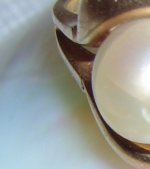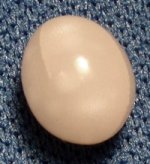Hello, All,
I would like to reopen discussion of the topic of non-bead nucleated pearls now that GIA has issued a monograph on them.
Here is part of the issue. I have a 20mm white round that was reported by one major lab as natural. I sent it to another lab and was told it is non-bead nucleated cultured pearl. It went to a third lab which could not make a call.
When it comes to very large pearls, to believe in the theory of non-bead nucleated, we must believe the following:
1. At a pearl farm, an oyster was implanted with a bead or piece of tissue.
2. Sometime before harvest, that oyster spit out the bead or digested the piece of tissue, so the pearl sac collapsed, but the irritation of the process continued to be enough to cause the oyster to continue making the pearl.
3. That the rejection of any bead occurred before nacre enclosed the center of the pearl with a hard layer...which must take place very early on.
4. That the rejecting oyster escaped detection by xray, etc. at the pearl farm.
5. That the oyster escaped the standard racks of the pearl farm and fell to the bottom in shallow water. Or that the pearl farmer moved it to some other location, anticipating a harvest in many, many years of an oyster not fed except by natural processes.
6. That for the next 15 years the pearl grew in that oyster just below the cultured racks and was never noticed or investigated by the SCUBA divers that are always in the water. Little pearls might be just 3-6 years, but great big ones are MANY years.
7. That 15-20 years after rejecting the man-placed irritant, the divers decided to harvest this oyster.
8. That after harvesting, the pearl farmer decided to try his luck by putting the pearl on the market as a natural.
9. That the resulting Non Bead Nucleated pearl is so nearly natural in its interior make-up that laboratories have difficulty being sure.
10. That although no one admits to using tissue to culture saltwater pearls, it must be done.
11. That the laboratories can be sure that some tiny tissue nucleation creates a wholly different xray appearance than non-human intrusion by a small parasite. I am reminded of one pearl I have that has the skeleton of a fish inside it and is the subject of a GIA report.
I would really appreciate criticism of this flow scheme to correct any errors of assumption.
Sincerely,
Tom



